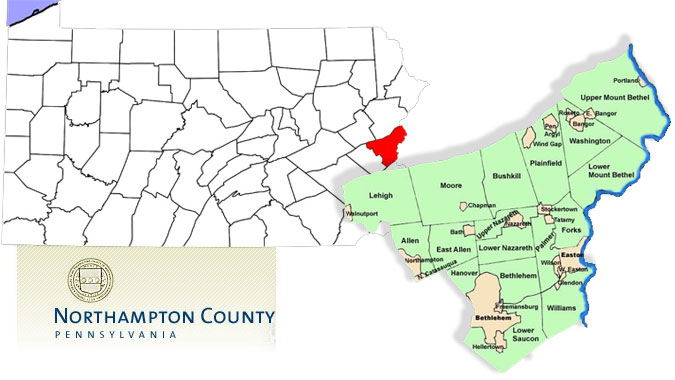
| Name of Agency | Northampton County |
||||||||||||||||||||||||||||||||||||||||||||||||||||||||||||||||
|---|---|---|---|---|---|---|---|---|---|---|---|---|---|---|---|---|---|---|---|---|---|---|---|---|---|---|---|---|---|---|---|---|---|---|---|---|---|---|---|---|---|---|---|---|---|---|---|---|---|---|---|---|---|---|---|---|---|---|---|---|---|---|---|---|---|
| Location | Northampton County, PA |
||||||||||||||||||||||||||||||||||||||||||||||||||||||||||||||||
| Project Delivery Method | Design-Build-Finance-Maintain |
||||||||||||||||||||||||||||||||||||||||||||||||||||||||||||||||
| Procurement Method | Best Value |
||||||||||||||||||||||||||||||||||||||||||||||||||||||||||||||||
| Total Project Cost | $38.5 million, including interest and maintenance costs |
||||||||||||||||||||||||||||||||||||||||||||||||||||||||||||||||
| Funding Source | Public-Private Partnership (P3), 100% County-Funded Payment Structure:
|
||||||||||||||||||||||||||||||||||||||||||||||||||||||||||||||||
| Construction Schedule | 4 Years |
||||||||||||||||||||||||||||||||||||||||||||||||||||||||||||||||
| Project Description | Northampton County is located in Eastern Pennsylvania, bordering New Jersey, and is the owner of 119 bridges. Like most other counties in the Commonwealth, a significant percentage of its bridge inventory was rated in poor condition or was considered functionally obsolete. Addressing each deficient or obsolete bridge by using traditional contracting methods (bid and repair/replace one bridge at a time) would have taken more than 20 years to complete. In order to accelerate replacement or rehabilitation of these bridges, Northampton County used an innovative "P3" approach to address 33 bridges under one contract. Pennsylvania's Act 88 allows public entities to use P3 delivery of transportation projects. The definition of public entities in Act 88 includes municipal authorities but does not include counties. To satisfy Act 88, Northampton County transferred the ownership of the 33 bridges within the project to the Northampton County General Purpose Authority (NCGPA), a municipal authority formed in 1998 under the Pennsylvania Municipal Authorities Act with broad powers, including the right to finance and coordinate transportation projects. NCGPA does not have a paid staff, which required issuance of a request for proposal (RFP) for an independent engineer to administer the bridge project on its behalf. Northampton County entered into a Service Agreement with NCGPA in which NCGPA agreed to obtain the services of a private entity "developer" to replace, rehabilitate, repair, and warranty the 33 bridges within the project over a period of 14 years while the County agrees to provide the funding. NCGPA then entered into a Public-Private Transportation Partnership Agreement (PPTPA) with the developer, setting forth the terms of project delivery and payment. Through these agreements, the County makes payments to NCGPA as follows, and NCGPA in turn pays the developer:
Funding is entirely from Northampton County's budget. No federal or state funds are required. Northampton County demonstrated initiative in using this innovative approach to address severe infrastructure deficits. Rather than addressing these bridge issues over decades on a pay-as-you-go basis or waiting for federal or Commonwealth funding, the County took control, using private financing under a payment structure it could afford. In addition, by utilizing a "service agreement/contract" for the bridge replacement, rather than a typical debt-obligation tax increase or toll encumbrance to fund the project, the County maintained its Moody's and S&P ratings, guaranteeing an unencumbered revenue stream to fund other county projects. Numerous other counties, municipalities, and public agencies are looking at the Northampton County model as a template for addressing their bridge deficiencies. |
||||||||||||||||||||||||||||||||||||||||||||||||||||||||||||||||
| Project Website | None |
| Program Goals | Goal was to quickly reduce the number of bridges in poor condition and functionally obsolete bridges in the county bridge inventory. |
|---|---|
| Bridge Selection Criteria |
|
| Delivery and Procurement Method | Design-Build-Finance-Maintain, Best Value |
| Funding Sources, Financing Strategy | Public Private Partnership 100% County Funded |
| Environmental, Right-of-Way, and Utility Considerations |
|
| Risks |
|
| Owner Management/Quality Assurance | Engineering firm hired by owner to administer project, perform design reviews, and provide construction inspection of critical construction activities. |
| Stakeholder Communication | Owner is responsible for all stakeholder communication. |